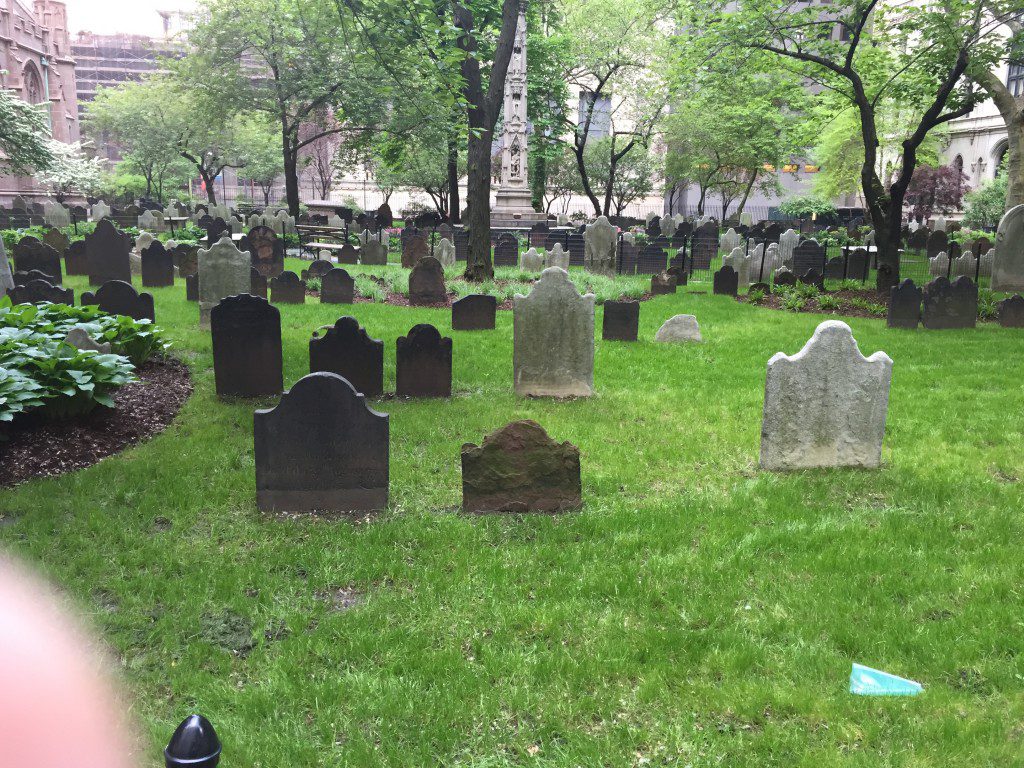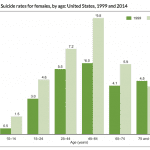
Every now and again, I revisit the issue of suicide. I am hardly an expert on the topic but I was struck some time ago at the statistics: that we think of suicide as a “teenager problem” but it’s not really, and that the magnitude of suicide is such that more men die prematurely (that is, before age 75) from suicide than women do of breast cancer.
Just this week, there have been more appearances of suicide in the news, as the designer Kate Spade and the food/travel reporter/TV series host/creator Anthony Bourdain both killed themselves, and the CDC issued a report on the increasing incidence of suicide, with the two key headline figures that in half of US states, suicide rates increased by 30% or more since 1999, and that in 54% of cases, there was no previously diagnosed mental health condition.
In a blog post from 2016, I provided two CDC tables which show just how dramatically the rates have increased since 1999, and also show that teen suicide rates are comparatively low and it’s middle-aged men and women and elderly men who have the highest rates (when considered separately, of course — even the highest suicide-risk age group, for women, is still considerably lower than the lowest age group for men).
In 2014, I summarized the top causes of death for men and women. 27,654 men under 75 died of suicide, the 4th highest cause of death behind heart disease, lung cancer and “other cancers” vs. 25,841 women dying of breast cancer, behind heart disease and lung cancer. Now, how one classifies rankings of causes of death will vary based on the number of categories one splits “cancer” into (and “other cancers” does not mean “all other cancers besides lung cancer” — various other types of cancers had their own buckets that were just lower than these. But it’s still a striking way of putting the issue in perspective.
Author and anti-assisted-suicide activist Wesley J. Smith has written on multiple occasions, including this article at the National Review, that he believes that suicide rates are increasing because, in the growing promotion of assisted suicide for what are deemed to be “good reasons” (that is, terminal illness or other sorts of suicide-acceptable suffering), suicide in general feels more acceptable to those at risk. I was also troubled at the reaction to Robin William’s death and the ultimate discovery that he had Lewy Body Dementia, and statements along the way that his suicide was understandable and possibly even the right thing to do in the circumstances. On the other hand, again, I am not an expert, and maybe there is a bright line between “assisted suicide” and “regular suicide.”
And in the meantime, well, not quite three years ago, the husband of an acquaintance killed himself, and then about a year ago, the uncle of one of my son’s friends did so. Both were middle-aged men.
It’s always the teenagers that we worry about, and I wonder to what extent that’s a matter of misunderstanding that teens are more at risk, or thinking that it’s more tragic and “worse” if a teen does so than an adult. Maybe we think of adults who kill themselves as somehow more able to understand what they’re doing. Maybe, when it comes to the elderly men with their sky-high rates, we think this is really not so bad, after all, and that maybe objectively they really don’t have anything to live for. Maybe the disappearance of the idea of universally-held moral values mean that we as a society have started to think that suicide can be a “right choice” for someone, at least so long as they don’t leave any particularly sad loved ones behind: father involved in the community who everyone loved, not OK; deadbeat dad due for his next domestic violence court date, sure, why not, it saves the state the costs of jailing him.
And, of course, of the 45,000 suicides in 2016 reported by the CDC, only a small fraction of them were celebrities (Wikipedia lists “celebrity suicides” but of those for 2016, they weren’t so famous that I had heard of them). Most of them were probably the sort of icky people that we don’t like to mention at our family get-togethers.
And that’s all I know. Readers, what can you share?
Image: Trinity Church cemetery, New York City, own work.













